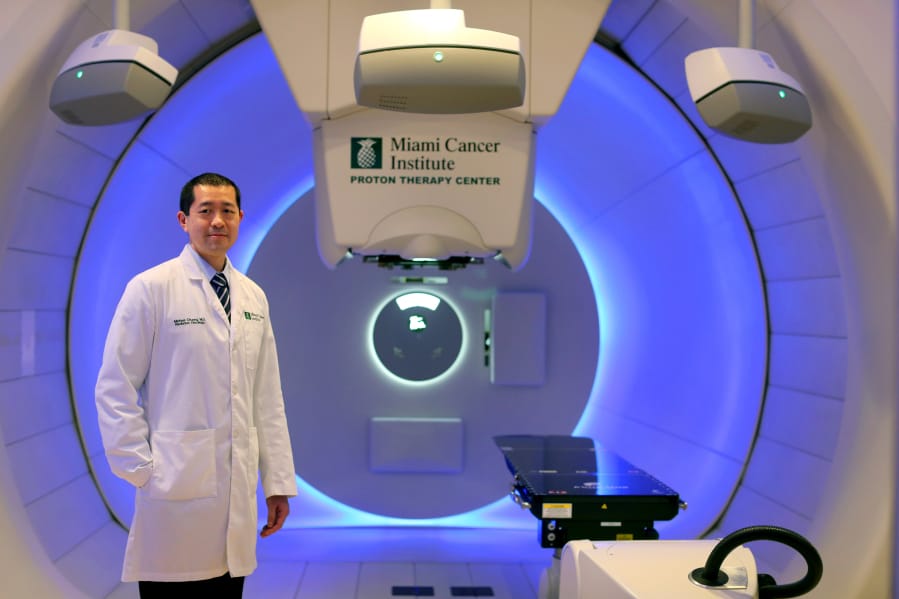When 30-year-old Olga Alarcon Cruz learned she had invasive breast cancer, she was terrified. A mother of two, Cruz pondered her treatment options, seeking one with fewer side effects than chemotherapy and less drastic than a mastectomy.
She explored the possibility of proton therapy, which uses a powerful machine to target radiation in the form of protons to the exact location of the tumor with a pencil-like beam. Now, after 36 treatments ending in November, her breast cancer is gone, and she will follow up with a year of immunotherapy, a treatment that boosts the body’s immune system to fight cancer.
“It was a commitment to go back for treatment every day, but I really had no side effects,” said Cruz, of Miami.
Over the past three years, Miami Cancer Institute at Baptist Health South Florida has used proton therapy on more than 500 patients for a variety of hard-to-treat cancers. Because the 200,000-pound machine allows doctors to target high doses of radiation at the tumor with precision, patients with tumors in the brain, head and neck, spine, breast, lung, esophagus, pancreas, liver, prostate, anal canal and chest are seeing better results and fewer side effects than other cancer treatment options, according to doctors at the facility.



